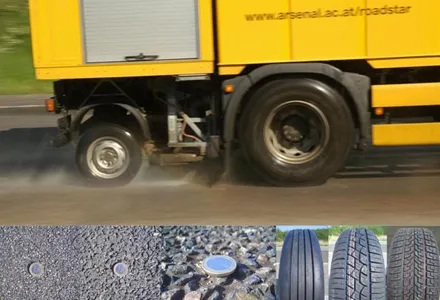The tremendous growth in the amount of available weather and road condition information—including devices that gather weather information, models and forecasting tools for predicting weather conditions, and electronic devices used by travellers — has led the Federal Highway Administration (FHWA) to develop effective and specific guidelines for communicating road weather information in a way that is consistent with what travellers need, want, and will use when making travel decisions.
August 21, 2012
Read time: 2 mins
The tremendous growth in the amount of available weather and road condition information—including devices that gather weather information, models and forecasting tools for predicting weather conditions, and electronic devices used by travellers — has led the 2410 Federal Highway Administration (FHWA) to develop effective and specific guidelines for communicating road weather information in a way that is consistent with what travellers need, want, and will use when making travel decisions.
This project, Testing and Evaluation of Preliminary Design Guidelines for Disseminating Road Weather Advisory & Control Information, builds upon the earlier Human Factors Analysis of Road Weather Advisory and Control Information project which was initiated to assist transportation officials in communicating both pre-trip and enroute road weather information effectively, consistently, and timely to meet the needs of travellers for different weather conditions and travel scenarios. This earlier project resulted in preliminary guidelines.
For the current 122-page publication, these preliminary guidelines were disseminated to a broad group of transportation and road weather officials for review and use.
These reviewers included staff from private agencies and State Department of Transportation (DoT) staff working at traffic management centres. Evaluation of the guidelines followed through end user surveys, on-site interviews and discussions, and application of the preliminary guidelines to assess their suitability and effectiveness for traffic operations. Valuable feedback provided by these end users was used to modify the preliminary guidelines and develop the revised guidelines.
The 122-page report can be downloaded from this link: %$Linker:External <?xml version="1.0" encoding="utf-16"?><dictionary /> 0 0 0 oLinkExternal http://ntl.bts.gov/lib/45000/45600/45623/FinalPackage_JPO-12-046_V1.pdf 122-page report false http://ntl.bts.gov/lib/45000/45600/45623/FinalPackage_JPO-12-046_V1.pdf false false %>
This project, Testing and Evaluation of Preliminary Design Guidelines for Disseminating Road Weather Advisory & Control Information, builds upon the earlier Human Factors Analysis of Road Weather Advisory and Control Information project which was initiated to assist transportation officials in communicating both pre-trip and enroute road weather information effectively, consistently, and timely to meet the needs of travellers for different weather conditions and travel scenarios. This earlier project resulted in preliminary guidelines.
For the current 122-page publication, these preliminary guidelines were disseminated to a broad group of transportation and road weather officials for review and use.
These reviewers included staff from private agencies and State Department of Transportation (DoT) staff working at traffic management centres. Evaluation of the guidelines followed through end user surveys, on-site interviews and discussions, and application of the preliminary guidelines to assess their suitability and effectiveness for traffic operations. Valuable feedback provided by these end users was used to modify the preliminary guidelines and develop the revised guidelines.
The 122-page report can be downloaded from this link: %$Linker:








